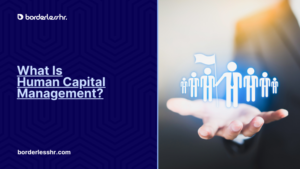In September 2015, world leaders gathered at the United Nations headquarters in New York to adopt the 2030 Agenda for Sustainable Development, which outlined a set of 17 interconnected Sustainable Development Goals (SDGs) aimed at addressing global challenges and fostering sustainable development.
These goals represent a universal call to action to end poverty, protect the planet, and ensure prosperity for all. This essay will delve into the essence of the Sustainable Development Goals, exploring their origins, objectives, and significance in the context of global development efforts.
- Origins of the Sustainable Development Goals
-
Objectives of the Sustainable Development Goals
-
- 1. End Poverty in All its Forms
- 2. Achieve Zero Hunger
- 3. Ensure Healthy Lives and Well-being
- 4. Quality Education for All
- 5. Gender Equality and Empowerment
- 6. Clean Water and Sanitation
- 7. Affordable and Clean Energy
- 8. Decent Work and Economic Growth
- 9. Industry, Innovation, and Infrastructure
- 10. Reduce Inequality Within and Among Countries
- 11. Sustainable Cities and Communities
- 12. Responsible Consumption and Production
- 13. Climate Action
- 14. Life Below Water
- 15. Life on Land
- 16. Peace, Justice, and Strong Institutions
- 17. Partnerships for the Goals
-
- Significance of the Sustainable Development Goals
- How BorderlessHR is Supporting Sustainable Development Goals
- Conclusion
Origins of the Sustainable Development Goals
The roots of the Sustainable Development Goals can be traced back to the Millennium Development Goals (MDGs), which were established in 2000 with the aim of addressing key social, economic, and environmental issues by 2015. While the MDGs made significant strides in reducing poverty and improving access to education and healthcare, they were criticized for their limited scope and lack of emphasis on sustainability and inclusivity.
In response to these shortcomings, the United Nations launched a comprehensive process to develop a new set of goals that would build upon the achievements of the MDGs while addressing their deficiencies. This process involved extensive consultations with governments, civil society organizations, academia, and the private sector, ensuring broad participation and ownership of the agenda.
The result of this collaborative effort was the adoption of the 2030 Agenda for Sustainable Development, which includes 17 Sustainable Development Goals and 169 targets covering a wide range of issues, including poverty eradication, gender equality, climate action, and sustainable consumption and production.
Objectives of the Sustainable Development Goals
The Sustainable Development Goals encompass a diverse array of objectives aimed at promoting social progress, economic prosperity, and environmental sustainability. These goals are interconnected and mutually reinforcing, recognizing the complex and interdependent nature of global challenges. Some of the key objectives of the SDGs include:
1. End Poverty in All its Forms
Goal 1 aims to eradicate extreme poverty and hunger, ensuring access to basic necessities like food, shelter, and healthcare.
2. Achieve Zero Hunger
Goal 2 focuses on sustainable agriculture and food security for all, especially smallholder farmers and rural communities.
3. Ensure Healthy Lives and Well-being
Goal 3 seeks universal healthcare and well-being for all ages, addressing maternal and child health, infectious diseases, and mental health.
4. Quality Education for All
Goal 4 aims for inclusive, equitable education and lifelong learning opportunities.
5. Gender Equality and Empowerment
Goal 5 aims to empower women and girls, addressing discrimination and unequal access to resources.
6. Clean Water and Sanitation
Goal 6 focuses on clean water, sanitation for all, and hygiene to prevent diseases.
7. Affordable and Clean Energy
Goal 7 ensures access to sustainable energy, promoting renewables and efficiency to mitigate climate change.
8. Decent Work and Economic Growth
Goal 8 promotes sustainable economic growth, full employment, and decent work for all.
9. Industry, Innovation, and Infrastructure
Goal 9 focuses on resilient infrastructure, sustainable industrialization, and innovation for economic growth.
10. Reduce Inequality Within and Among Countries
Goal 10 aims to reduce income inequality and promote inclusion through progressive policies.
11. Sustainable Cities and Communities
Goal 11 aims for inclusive, safe, resilient cities prioritizing environmental sustainability.
12. Responsible Consumption and Production
Goal 12 promotes sustainable consumption, reducing waste and enhancing resource efficiency.
13. Climate Action
Goal 13 calls for urgent climate change action, including mitigation and adaptation measures.
14. Life Below Water
Goal 14 aims to conserve marine ecosystems and sustainably use ocean resources.
15. Life on Land
Goal 15 protects terrestrial ecosystems, halts deforestation, and conserves biodiversity.
16. Peace, Justice, and Strong Institutions
Goal 16 promotes peaceful societies, governance, and access to justice.
17. Partnerships for the Goals
Goal 17 emphasizes global cooperation to achieve sustainable development, mobilizing resources and sharing knowledge.
Significance of the Sustainable Development Goals
The Sustainable Development Goals (SDGs) offer a comprehensive agenda for global development, fostering collaboration among governments, organizations, and individuals for a more just, equitable, and sustainable future. They take an integrated approach, addressing social, economic, and environmental issues simultaneously to promote synergies and avoid trade-offs. Universal in nature, they emphasize collective action across all countries to tackle shared challenges like poverty and climate change. Prioritizing inclusivity and leaving no one behind, the SDGs focus on equity and social justice, guided by principles of human rights and equality.
How BorderlessHR is Supporting Sustainable Development Goals
BorderlessHR helps people find jobs all around the world. This is important because it helps many goals for making the world better. First, it helps make sure everyone has a chance to work, which is good for the economy.
We also make sure everyone has equal chances to find jobs, which is fair. By helping people learn new skills for their jobs, we’re also supporting education. And by offering jobs that can be done from anywhere, we’re helping to make sure everyone has a fair shot at work, no matter where they live. Overall, our work is helping to make the world a better place for everyone.
Conclusion
In conclusion, the Sustainable Development Goals represent a transformative agenda for global development, providing a comprehensive framework for addressing the most pressing challenges facing humanity.
By promoting social progress, economic prosperity, and environmental sustainability, the SDGs offer a roadmap for building a more just, equitable, and sustainable world for future generations.
However, achieving the Sustainable Development Goals will require sustained commitment and collective action from governments, organizations, and individuals worldwide. Only through concerted efforts and collaboration can we realize the vision of a world where all people can thrive in harmony with nature.







